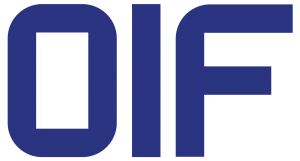OIF’s FlexEthernet Project Targets DCI
 News Analysis, Light Reading
News Analysis, Light Reading
Carol Wilson, Editor-at-large
February 12, 2015
Internet content providers and other network operators are looking for much fatter connections between their data centers than the current Ethernet service definitions can provide. So the Optical Internetworking Forum is stepping up with a new project to define more flexible Ethernet options for using the entire capacity of a given optical link. (See OIF Aims to Enable More Flexible Ethernet.)
Known as FlexEthernet, the project will establish a way for Ethernet equipment to use a variety of different tools such as channelization, bonding and sub-rate functionality to create those faster connections in a standard way, says Nathan Tracy, chairman of the Optical Internetworking Forum (OIF) ‘s Technical Committee and manager of industry standards for TE Connectivity (NYSE: TEL).
The idea is to supplement the Ethernet standard definitions developed by the IEEE with a common approach that can be brought to market more quickly, in time to meet the booming demand for faster connections between data centers, Tracy says.
“This uses the IEEE’s Ethernet in more flexible ways,” he notes.
Large Internet content providers are among those clamoring for the new flexibility, Tracy admits. While he doesn’t name specific companies, it’s apparent that Google (Nasdaq: GOOG), Apple Inc. (Nasdaq: AAPL) and Facebook are driving their own networking agendas and would benefit from this kind of connectivity.
One common feature set within FlexEthernet would allow a given link between two points to consume the full bandwidth of that link, beyond the published data rates that are typically 10 Gbit/s or 100 Gbit/s. “What FlexEthernet will enable a user to do is to start running data at the maximum rate of the link and then dial that down until it reaches an error rate that is acceptable,” Tracy says. “The traffic will go beyond the defined Ethernet service, but it will still look like Ethernet as the data goes on and off the link. That is one of the first apps of FlexEthernet and it is the one that drove this conversation a year ago.”
Another possible FlexEthernet option is to enable creation of custom data rates by using bonding of multiple rates — offering a 200Gbit/s service by bonding together two 100Gbit/s lanes, for example. The traditional way of doing this involves link aggregation, Tracy says, but that wouldn’t deliver the full 200 Gbit/s.
The IEEE would be expected to ultimately develop a standard approach to 200 Gbit/s, but that could be a couple of years away and, in the meantime, a standard approach to offering that kind of connection can be defined by the OIF.
“This would allow interim data rates for niches or specific needs until it is determined there is a broad market potential and broadly available technology” to do it via IEEE standards, Tracy says. The standards process isn’t forced ahead of what could be more efficient options in the long run.
FlexEthernet using an extension of the OIF’s multi-link gearbox will also allow the bundling of 10Gbit/s lines together so they can be supported by one 50-gig pin on an ASIC. This makes more efficient use of the limited number of pins on a given ASIC, Tracy notes.
The new project was launched at the OIF’s quarterly meeting earlier this year, along with the preparation of the OIF’s SDN Framework, a technical white paper which lays out the components and interfaces that will need to be standardized for SDN. That work is focused on establishing an applications development framework. (See SDN Tests Go Swimmingly, Says OIF and OIF Launches SDN Implementation Project.)
— Carol Wilson, Editor-at-Large, Light Reading

